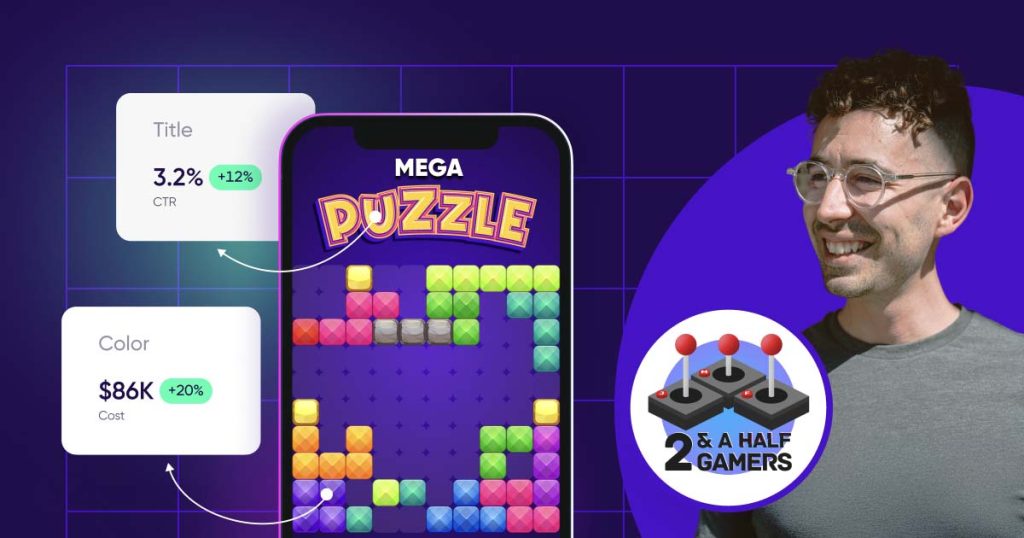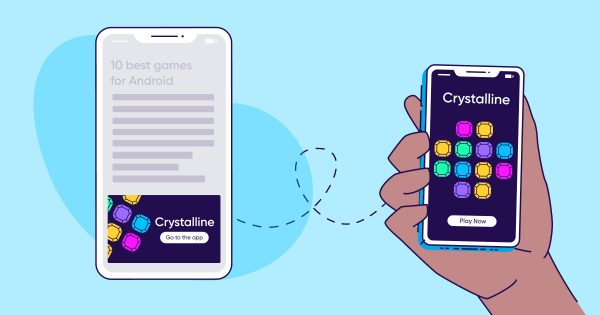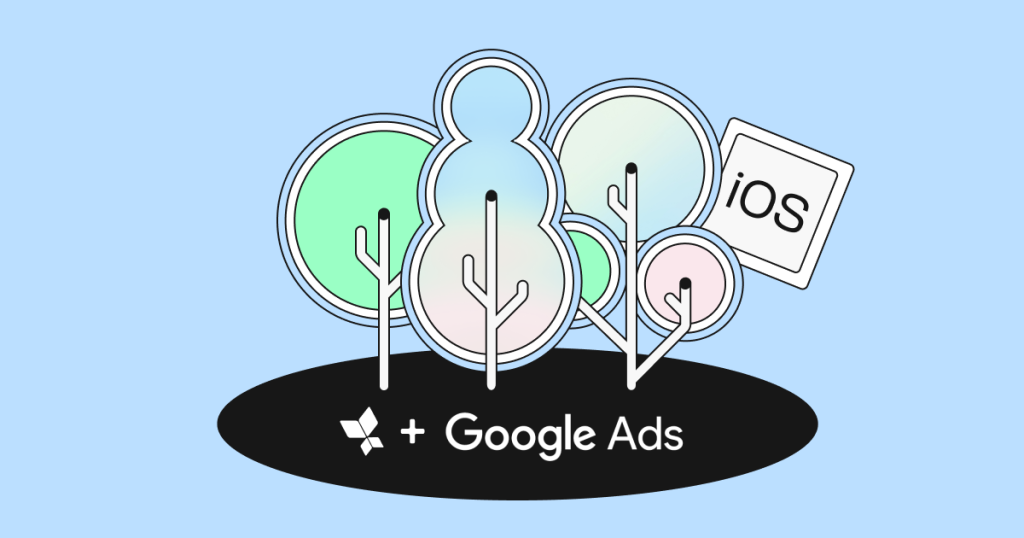A comprehensive guide to dynamic creative optimization in 2024


To really hit the mark with your ads, you need to make them spot-on for your target audience.
A Meta study dug into this and found that personalizing your ads boosts your short-term sales between 1.2 and 7.4 times, while long-term sales go up by 1.2 to 2.7 times.
And get this, a whopping 81% of Gen Z and 57% of millennials actually prefer personalized ads.
Now, the burning question is: How do you pull off ads that feel like they were made just for each person? That’s where dynamic creative optimization steps in, letting you tweak your creatives to fit each user’s preferences.
What is dynamic creative optimization (DCO)?
Dynamic creative optimization (DCO) is a display ad technology that lets you run and personalize multiple variations of your ads based on real-time data.
Unlike traditional static ads, which display the same content to all users regardless of their behaviors, DCO dynamically adjusts various elements of an ad — images, text, offers, and CTAs — to match each user’s unique preferences.
For example, this banner ad from a food delivery app shows different images of food items:

This personalization occurs instantly as the user views the ad, drawing from several data points such as demographics and browsing history. This improves the overall user experience, which then positively impacts click-through rates, conversions, and ROI.
How does dynamic creative optimization work?
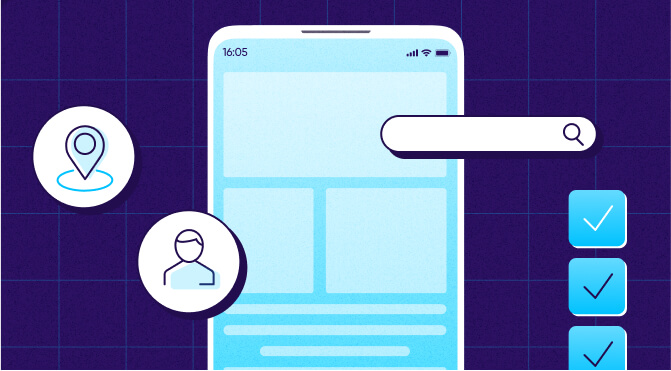
DCO uses smart algorithms and machine learning to deliver personalized ad experiences, using various real-time data inputs. It considers factors like:
- Browsing history
- Geographical location
- Device type
- Weather conditions
- CRM records
All of these are managed through a centralized data management platform (DMP).
Armed with this data, DCO taps into a creative management platform (CMP — more on this coming up) to assemble ad elements such as imagery, text, and layout components. These elements are dynamically arranged and customized to create unique ad variations according to user-specific preferences and behaviors.
And the optimization journey doesn’t end there.
DCO then continuously refines its approach by conducting experiments and A/B tests to identify the most effective ad compositions. It analyzes performance metrics and user engagement data to adjust ad elements.
The result? Highly targeted and impactful ad campaigns that also streamline creative production workflow.
Benefits of dynamic creative optimization

Dynamic creative optimization offers several benefits to advertisers, making their advertising efforts more efficient and effective. These include:
- Operational efficiency and automation: DCO automates the process of testing different ad combinations, saving you a lot of time and effort. You can focus on more strategic initiatives while DCO handles the nitty-gritty of experimentation.
- Faster experimentation and insights: With DCO, you can quickly try different ad versions, speeding up the experimentation phase. Find the best campaign strategies and get useful data-driven insights to make smart decisions and improve ads over time.
- Personalization and real-time responsiveness: DCO serves personalized ads based on what users are doing in real-time. This makes your campaigns stand out from competitors and truly connect with your target audience, leading to better results.
- Cost-efficiency and performance amplification: DCO makes sure your ad budget is spent wisely by using real-time data to optimize ad placement. This optimized approach not only saves money but also makes your ads perform better. Get higher engagement, more clicks, and better results compared to regular ads.
- Creative versatility and precision: DCO uses advanced technology to ensure every part of your ad, from headlines to images, has the biggest possible impact. That gives you the freedom to experiment with different ad formats and designs. This creative versatility, combined with precision, makes your creative game visually appealing and more likely to drive desired actions.
- Continuous data integration and broad reach: DCO pulls in data from different sources to keep your campaigns up to date with the latest insights. This way, you make better decisions and run more effective campaigns. Also, DCO works across various advertising platforms like display, social media, video, and audio, making it a great tool for reaching your audience wherever they are.
Dynamic creative optimization best practices
Now you know the benefits of using DCO in your online ad campaigns, here are some best practices to start you off on the right foot:
1 — Choose the right creative assets
Consider your audience demographics, preferences, and behaviors to select creative assets that:
- Effectively show your mobile app’s features and benefits
- Best resonate with your target audience
A/B test different images, videos, and graphics to identify which drive the highest engagement and conversions. For example, analyze user feedback, engagement metrics, and conversion rates to determine whether images featuring people using the app outperform product-focused visuals.
2 — Use multiple CTAs
Experiment with different CTAs (calls to action) to understand which ones prompt the desired user actions most effectively. Test variations in wording, design, and placement of CTAs to optimize for conversions.
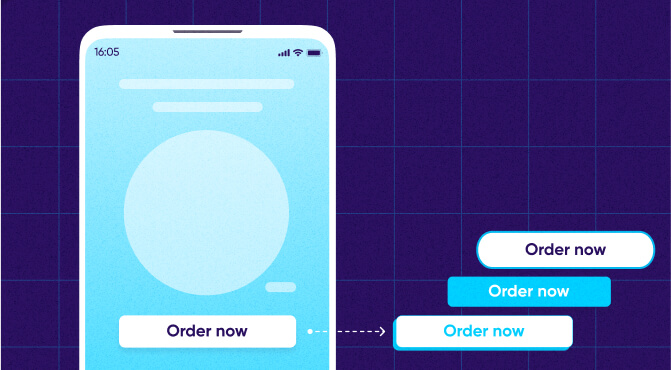
Additionally, consider incorporating dynamic CTAs that adapt based on user behavior or demographics. For instance, personalize CTAs to encourage users who have previously engaged with your app to “Continue Your Journey” while prompting new users to “Start Exploring.”
Notice how this also gives users clear instructions on what to do next.
3 — Double down on your retargeting efforts
Implement advanced retargeting strategies such as sequential messaging and dynamic content to re-engage users at different stages of the conversion funnel. Segment your audience based on their interaction history with your mobile app and tailor ad creatives accordingly.
For example, if you have an eCommerce app, you can retarget users who abandon their shopping carts with personalized ads featuring the items they left behind. Alternatively, you can offer exclusive discounts to encourage conversion.
4 — Keep ad copy concise
Research mobile user behavior and attention spans, and craft concise, impactful ad copy that conveys key messages effectively. Test different ad copy variations to determine which ones resonate best with your target audience.
Use compelling headlines, benefit-driven language, and clear CTAs to encourage immediate action. For instance, you can use persuasive copywriting techniques such as urgency (“Limited Time Offer”) or social proof (“Join Millions of Satisfied Users”) to compel users to take action.
5 — Choose the right aspect ratio for placement
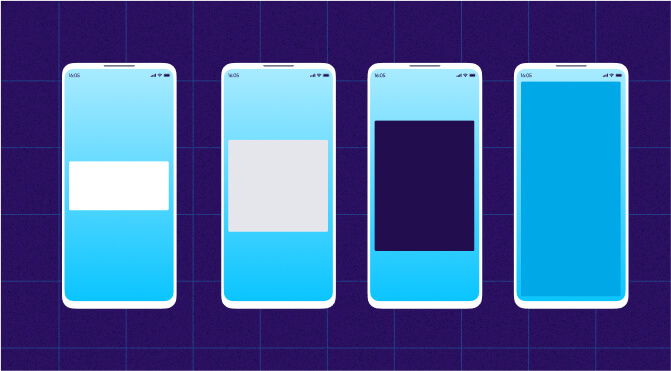
Analyze ad performance across different placement formats and device types to identify the most effective aspect ratios for each scenario. Draw on responsive design principles to make your ad creatives adapt seamlessly to various screen sizes and orientations.
Additionally, consider the viewing context of each placement format (such as social media feed or in-app banner) and optimize your creatives accordingly. For example, vertical or square aspect ratios make more sense for mobile feed placements, improving visibility and engagement.
6 — Simplify your campaigns
Create a clear testing plan to test different parts of your ads systematically. Focus on important metrics like click-through rate (CTR), conversion rate, and return on ad spend (ROAS).
Test and optimize one or two variations at a time to keep things simple and get actionable results. For instance, you can try different ad designs while keeping your target audience the same to see how the design affects your ad’s performance.
7 — Rapidly optimize based on results

Implement a continuous optimization process, where you analyze how your DCO campaigns are doing, and make changes as needed using real-time data. Use automated optimization tools that automatically identify trends and improvement areas.
You can also use DCO platforms with predictive analytics and machine learning capabilities to predict user behavior, and optimize ad delivery in real-time. For instance, these platforms can look at past data to predict future results and tweak your campaigns to get the best ROI.
How does dynamic creative optimization differ from other forms of ad targeting?
What sets dynamic creative optimization apart from other ad targeting methods?
Here’s a quick breakdown:
DCO vs static creative
Both DCO and static creatives can use A/B testing to find effective ads, but they differ in how they adapt to information.
DCO changes parts of an ad based on specific data, using AI and machine learning to optimize campaign results. Static creatives, on the other hand, can’t change, even with relevant data available.
DCO vs dynamic creatives
Despite the similar names, DCO and dynamic creatives are not the same.
Dynamic creatives typically change content but lack the machine-learning mechanisms that optimize ad performance. They’re often used in basic retargeting campaigns. DCO tools, however, leverage machine learning and algorithms to customize ads, test them on smaller audiences, and show those with the best results.
For mobile apps, this ensures users see the most relevant and compelling ads, leading to higher app downloads, user engagement, and retention rates.
DCO vs creative management platforms (CMPs)
DCO and CMPs are both innovative AdTech solutions but serve different purposes.
CMPs help marketers create, test, and improve ad creatives, whereas DCO focuses on serving and optimizing ads. In simple terms, a CMP handles the creative design aspect, while DCO tests different ad variations and serves the most effective ones to mobile users, driving app installs and user actions.
How to set up dynamic creative optimization ads
Here’s a detailed guide on how to set up DCO ads:
1 — Create your buyer personas
Develop detailed buyer personas that represent your target audience segments.
If you’re promoting a fitness app, your buyer personas might include “Fitness Enthusiasts,” “Busy Professionals,” and “Health-Conscious Parents” — each with specific demographics and motivations.
Consider factors like demographics, psychographics, behavior patterns, and pain points. Collect information on each persona’s media consumption habits, preferred communication channels, and purchase motivations. Use historical data and analytics to learn more about your audience’s preferences and behaviors.
- For B2C, focus on personal interests, lifestyle choices, and shopping behaviors.
- For B2B, include factors such as industry, company size, job title, and pain points.
2 — Identify channels

Determine the digital channels where your target audience is most active.
To start, look at website data, social media stats, and industry trends. Explore channels like:
- Social media platforms (Facebook, Instagram, LinkedIn)
- Display networks
- Search engines (Google Ads)
- Mobile apps
- Email newsletters
Consider each platform’s specific features and targeting options to connect with your audience.
Continuing with our fitness app example, if your app is aimed at health-conscious young adults, target places like Instagram, fitness websites, and other fitness apps where they’re likely to be.
3 — Outline targeting
Next, create a robust targeting strategy based on your buyer personas and chosen channels.
Use the powerful targeting options available on digital advertising platforms to reach your desired audience. Define targeting parameters such as geographic location, device type (mobile, desktop), interests, behavior (for example, past purchases or website visits), and demographics.
For instance, you could aim at “Fitness Enthusiasts” living in cities, aged 18-35, who like health topics.
Then, divide your audience into groups to give them personalized ads that match their interests and characteristics.
4 — Confirm messaging
Write compelling messaging that resonates with each buyer persona and aligns with your campaign objectives.
Here’s how to go about this:
- Create variations of ad copy, headlines, and CTAs to test different messaging approaches.
- Write ad copy addressing each audience segment’s specific pain points, needs, and desires.
- Keep your brand’s tone and message consistent in all your ads.
- Customize content to suit different audience preferences.
5 — Connect to a data management platform

Connect your DCO platform with your DMP or other data sources to get detailed customer information. This lets you personalize and optimize ad content in real-time, based on what users do and like.
Bring together data from different places like website visits, customer records, and external data providers. Then divide your audience into groups and learn about their interests to make super-focused ad campaigns.
This way, each user gets ads that matter to them.
6 — Create your decision matrix
Set up a decision matrix to determine which ad variations to serve to different audience segments at different customer journey stages. Consider factors like audience demographics, browsing behavior, and campaign objectives.
For example, for a fitness app, you can:
- Provide mobile-friendly ad formats for smartphone users
- Tailor messaging according to time-of-day preferences (think: morning workouts vs. evening relaxation)
Additionally, set rules and triggers for dynamically selecting ad creatives, messaging, and CTAs based on user actions and interactions. Continuously refine this matrix based on ad performance and user preferences over time.
7 — Combine creatives and actions
Pair different actions from the decision matrix with suitable creative materials to make personalized ads for your audience. Create a mix of visuals like images, videos, headlines, and CTAs to try out different styles and messages.
Use dynamic ad templates and creative elements that adapt according to user data and real-time trends. Experiment with different combinations of visuals and CTAs to determine what works best for getting people interested and taking action.
8 — Real-time optimization
Monitor your DCO ads’ performance in real-time and make data-driven optimizations to improve campaign effectiveness.
This includes:
- Leveraging real-time analytics and machine learning to spot trends
- Tweaking targeting options
- Refining ad content
Additionally, assess KPIs such as click-through rates, conversions, and cost per acquisition for campaign evaluation. Experiment with A/B and multivariate testing to evaluate various creatives, messages, and targeting strategies. Adapt campaign settings, budgets, and tactics accordingly.
Future trends for dynamic creative optimization

In the future, you can expect DCO for app marketing to get even better as AI and machine learning evolve. These fancy technologies will help DCO platforms learn a lot about users and predict what they like. This means super-personalized ads that engage people and make them install or use your app.
But, there’s a little bump in the road.
As third-party cookies and app tracking transparency (ATT) policies limit the amount of user data available for targeting, DCO will need to find new ways to overcome “signal loss.” This means relying more on your own data (aka, first-party data) and smart targeting techniques to display relevant ads, and less on individual user tracking.
DCO platforms may also need to prioritize privacy-conscious strategies and transparent data practices to maintain user trust while delivering personalized ad experiences.
Key takeaways
- Dynamic creative optimization technology allows advertisers to customize ad content in real-time based on user data, ensuring highly relevant and engaging ad experiences.
- DCO uses real-time data inputs and AI algorithms to deliver personalized ad experiences, continuously optimizing ad performance. It adjusts various elements of an ad, such as images, text, and offers, to match each user’s unique preferences and behaviors.
- For mobile app advertising, DCO best practices include selecting assets, testing CTAs, enhancing retargeting, and keeping ad copy concise. Optimizing aspect ratios, simplifying campaigns, and using real-time data are also crucial.
- To set up DCO ads, you need to create buyer personas, outline targeting strategies, and connect to data management platforms. Develop a decision matrix, pair actions with creatives, and monitor performance for optimizations.
- With user data becoming more limited, DCO will need to rely more on first-party data and contextual targeting techniques to maintain effectiveness and user trust. Privacy-conscious strategies and transparent data practices will also be key.






